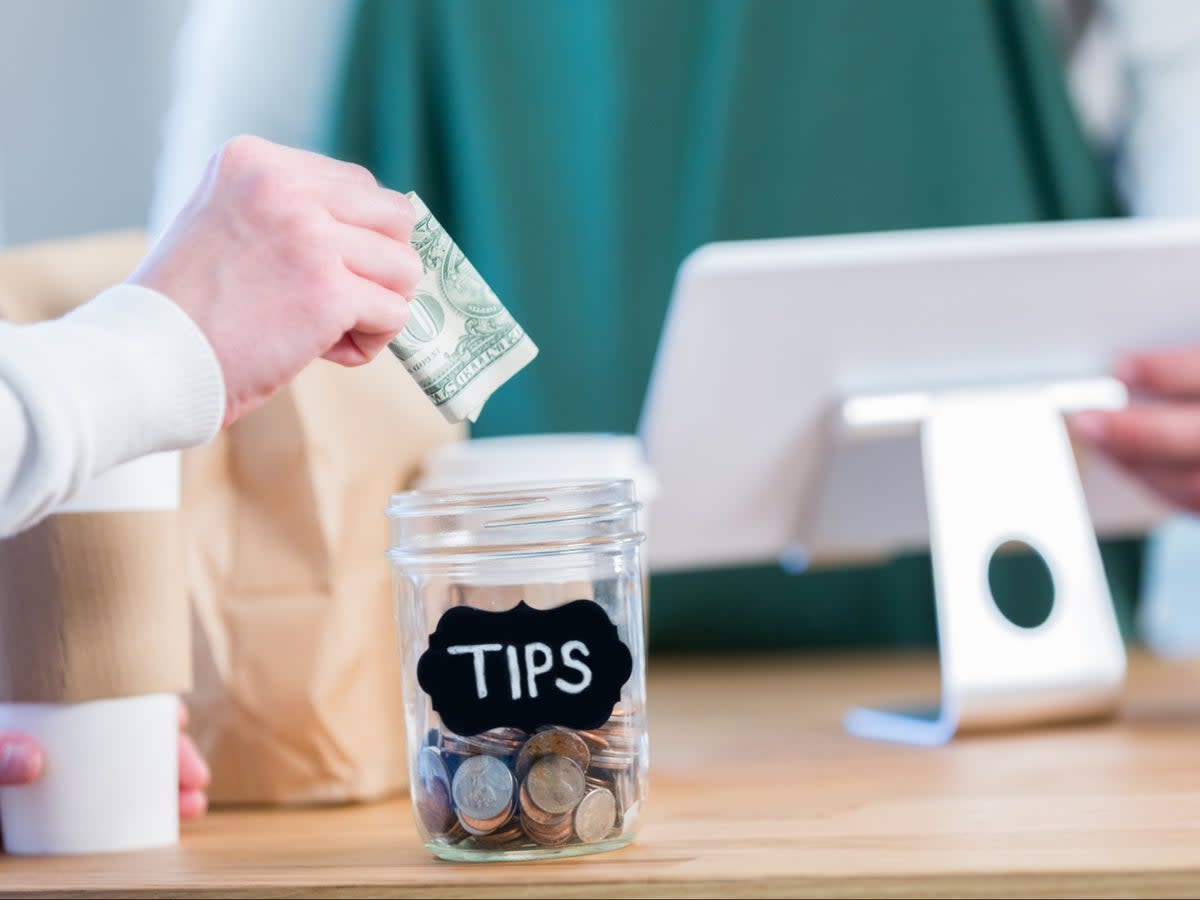American restaurant server fumes over $70 tip left by tourists

Tipping is a part of everyday American life, but for visitors from nearly every other country on earth, it can be a difficult – and expensive – minefield to navigate.
A tweet from a US server went viral this week after she criticised a group of European tourists for not leaving an adequate tip after spending US$700 (£570.25) on food and drink and spending “hours” at their table.
Twitter user @madison_tayt took to the social media platform to complain about the incident and wrote: “Lmao [sic] I f***ing hate Europeans sometimes, on God. This table just left US$70 (£57.02) on a US$700 check after chilling for HOURS.
“My manager even asked about their service and they were OVER THE MOON about my service so he explained the customary tip is 20 per cent and they were like, ‘OK’. And left.”
Her tweet, which has been liked more than 28,600 times and quote-tweeted more than 11,300 times since she posted it on Monday (20 March), has sparked debate over tipping etiquette in the US compared to the rest of the world.
In the US, customers are expected to tip between 15 to 20 per cent of their bill in restaurants. However, many hospitality workers agree that any tip under 20 per cent is considered a poor tip and indicates something was wrong with their service.
This means that on a US$700 bill, the customary 20 per cent tip would mean paying an additional US$140 (£114).
American hospitality staff rely on tips in order to make a living wage, as restaurant owners are required to pay a minimum hourly wage of just US$2.13 (£1.74). There are different laws in different states around tipped minimum wage, but under federal law, employers are expected to pay US$5.12 in “tip credit” on top of the minimum wage.
lmao i fucking hate europeans sometimes on god. this table just left $70 on a $700 check after chilling for HOURS. my manager even asked about their service and they were OVER THE MOON about my service so he explained the customary tip is 20% and they were like “ok.” and left
— brecht apologist (@madison_tayt) March 20, 2023
Therefore, the basic combined cash and tip minimum wage rate is US$7.25 (£5.91), although this varies from state to state. In comparison, the National Minimum Wage for workers in the UK was £9.50 (US$11.66) in 2022.
While many Americans argued that foreign visitors should tip according to the custom of the place they are visiting, some expressed confusion over when it became the norm to tip at least 20 per cent.
Whether you agree with US tipping customs or not, you should have the decency to respect them while visiting here. If you can’t, don’t be surprised if your drink refills come less often, your server checks on you less frequently, or if your food or check are slower to come out.
— Woof (@nicole9099woof) March 22, 2023
“I’m American and I’m still figuring out when 20 per cent became customary,” one person wrote. “It was always 15 per cent. 20 per cent rarely for exceptional service. I want to tip 20 per cent sometimes. But I want it to be recognised as a statement of excellence when I do. Not cheapened to ‘customary’.”
Another replied: “Herein lies the problem. Even Americans can’t agree on what the tipping rules actually are. How does anyone expect foreigners to understand?”
Others pointed towards the low minimum wage that hospitality workers are paid as the problem, not customers.
Tipping culture aside, visiting a restaurant in NYC as a european is painful.
The dollar is strong, their wages much higher, and then they slap taxes and service on top of an eye-watering bill for a meal of much lower quality than you'd get in europe for the price. https://t.co/LjFrxuUdTf— James 🚉🌆 (@TypeForVictory) March 22, 2023
One person said: “I hate it when victims of messed-up systems turn on each other instead of the systems that make life difficult for them. No job should pay you so little that tips are mandatory for you to live. Tipping should be optional, you shouldn’t have to confront customers for it.”
Last year, US president Joe Biden signed an executive order to raise the federal minimum wage for federal workers and contractors to US$15 per hour. In order to raise the minimum wage to that rate more broadly, the law would have to go through Congress, according to CNBC.
However, efforts to increase the minimum wage for restaurant workers have previously been met with resistance. In the state of Maine, similar efforts failed in 2017 after staff campaigned to overturn a referendum that voted to raise their minimum wage from US$3.75 per hour to US$12 by 2024.
The servers said that raising their wages would lead to customers tipping less and ultimately reducing their take-home income, the Washington Post reported at the time.
Until the US government, restaurant owners and restaurant workers can reach an agreement over their pay, it falls to the customers to tip generously in order to ensure that staff go home with a decent wage.
So if you’re planning a visit to the US, just remember: 20 per cent is customary.


